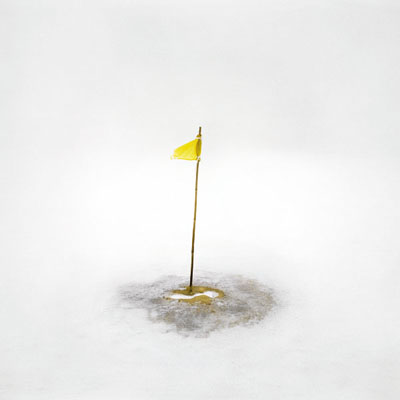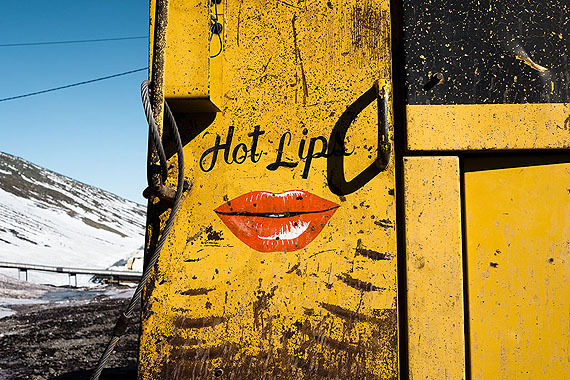
Piss Pole, Antarctica, Aurina #1
2008
Inkjet print-pigment on paper
787 x 100cm
Edition of 5
Anne Noble »
At the End of the Earth
Exhibition: 18 Aug – 25 Sep 2010

Stills Gallery
36 Gosbell Street . Paddington
NSW 2021 Sydney
+61 2-93317775
info@stillsgallery.com.au
www.stillsgallery.com.au
Wed-Sat 11-17

AI #17 Hot Lips
2008
Inkjet print-pigment on paper
466 x 700cm
Edition of 6
ANNE NOBLE At the End of the Earth 18 August to 25 September 2010 At the End of the Earth continues Anne Noble's fascination with the continent of Antarctica. White Lanterns showed at Stills Gallery in May 2006. This work depicted the surreal way the Antarctic was portrayed in museums and research centres around the world and tapped into our fascination with this vast place. At the End of the Earth takes a similarly oblique approach in its refusal to romanticise the landscape, by focussing on manmade interventions into the pristine terrain. The work comprises three series of images made in the summer of 2008. Central to the installation are six large photographs of piss poles, taken at various US research locations. Yellow pee flags are a common sight in many remote field camps in Antarctica. They have a utilitarian function yet these images take on the appearance of abstract paintings. The images reference the performative marking out of territory and are a discursive commentary about the physical and gendered nature of our relationship to place. Accompanying the piss poles a stridently colourful grid of images depicting transport vehicles branded with women's names like Hazel, Patsy and Brenda further challenge our romance with the heroic age. In a third series Noble portrays landscapes of the artificially constructed roads and towns that the trucks inhabit. The colonial wild west seems alive and well in Antarctica. Anne Noble's fascination with researching and photographing Antarctica has been alive since 2001. She explores the cultural construction of place with biting intent. Her images challenge the traditional representation of the Antarctic as heroic, picturesque and sublime and draw attention to historical and contemporary politics of land and place. Anne Noble won a prestigious US National Science Foundation Artists and Writers Award to travel and work in Antarctica to complete this project. She previously showed Ruby's Room at Stills Gallery in 2004. She has a rich history of photographic work which spans genres of landscape, documentary and installations (incorporating still and moving images). She is one of New Zealand's most celebrated photographers.